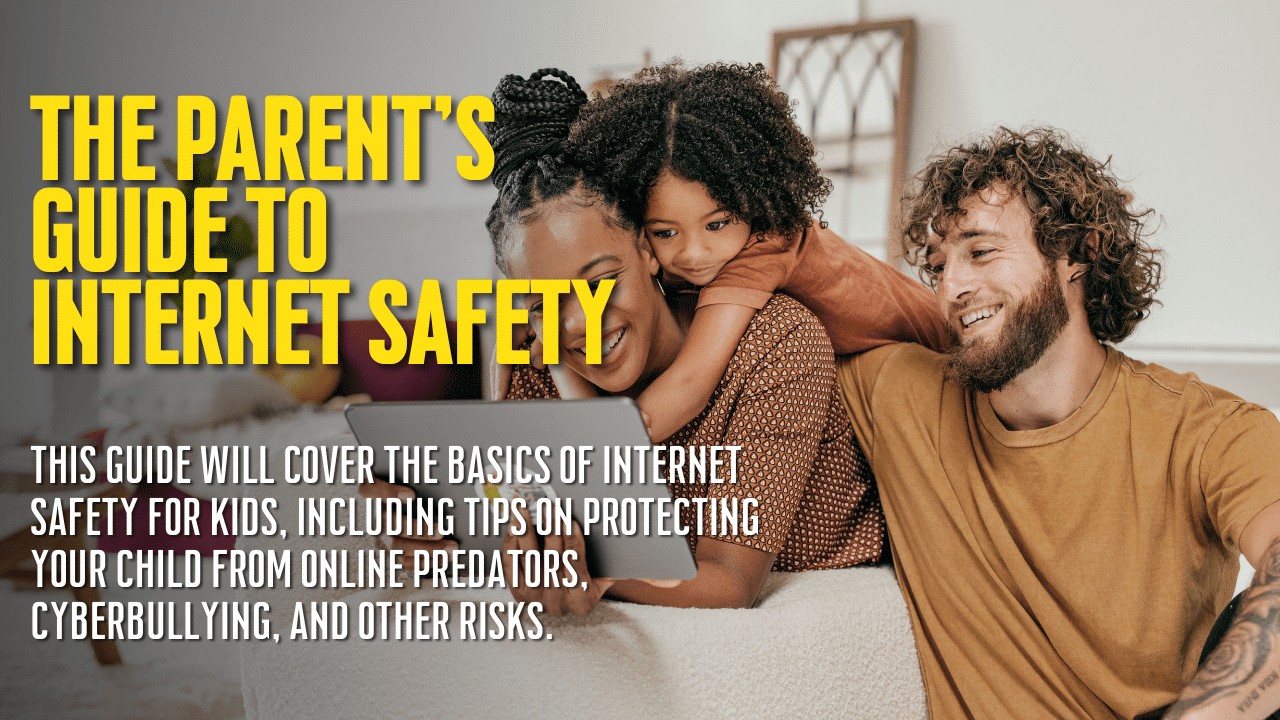-
Connect With Your Ottawa IT Service Company at (613) 828-1384
Connect With Your Ottawa IT Service Company at (613) 828-1384
Do you remember when families shared one desktop computer in the living room? Today, a computer in the living room is supplemented by tablets in the kitchen, video games in the bedroom, and smartphones in everyone’s pocket. Thanks to the emergence of universal high-speed internet access and affordable mobile devices, our kids are growing up in a digital world.
According to the American Community Survey (ACS), 95 percent of 3- to 18-year-olds had home internet access in 2019. As a parent, monitoring your child’s internet use and teaching them how to stay safe online is important. Just as you would never send your child outside without teaching them about stranger danger, it’s important to have a conversation with your kids about internet safety.
This guide will cover the basics of internet safety for kids, including tips on protecting your child from online predators, cyberbullying, and other risks.

Internet safety is the knowledge and practices users should adopt to protect themselves and their information from online threats. It includes measures to protect against malware, phishing, identity theft, online scams, and other online dangers.
Internet safety also encompasses protecting your child from inappropriate content and contact with online predators. With the rise of social media and chat apps, it’s easier for predators to contact children and teens online. They may pose as a friend or peer to gain your child’s trust and then attempt to groom them for sexual exploitation.
According to the National Center for Missing and Exploited Children (NCMEC), there were more than 29 million reports of suspected child sexual exploitation in 2021, an increase of 35 percent from 2020. These cases can involve solicitation (asking a child to send explicit images), production (forcing a child to produce sexually explicit content), or trafficking (arranging for a child to engage in sexual activity for financial gain).
It’s important to teach your kids about internet safety so they can protect themselves from these dangers.
You can take several steps to keep your child safe online, including monitoring their internet use, teaching them about internet safety, and using parental control tools.
Safety in the physical world starts with education; the same is true for safety online. Talk to your kids about internet safety, helping them to understand the risks and how to protect themselves. By teaching them about the potential risks and how to stay safe, you can help them navigate the online world more safely.
Monitoring your child’s internet use is one of the best ways to keep them safe online. This means paying attention to the websites they visit, their apps, and the people they interact with online. If you notice your child is visiting inappropriate websites, using unsafe apps, or talking to strangers online, take action immediately. You may need to block certain websites and apps, limit their internet use, or discuss internet safety with them.
In addition to teaching your child about internet safety and monitoring your child’s internet use, you can also use parental control tools to help keep them safe online. Parental control tools are software programs that allow you to monitor your child’s internet use and block access to inappropriate websites and content. Some parental control tools also allow you to set time limits for internet use, track your child’s online activity, and receive alerts if they attempt to access blocked websites or content.
Here are a few tactics that can be used to keep your kids safe online:
Keep an eye on the devices your children use to access the internet. In addition to computers, this may include smartphones, tablets, gaming consoles, and smart TVs. Not all devices are created equal when it comes to internet safety. Some devices may have fewer built-in security and parental control options than others. This means they may be more vulnerable to online threats, such as malware and online predators.
The internet is constantly changing, which means the threats to your child’s safety online are also constantly changing. It’s important to stay up-to-date on the latest internet safety threats so you can protect your child.
To help you stay informed, here are a few of the most common internet safety threats to be aware of:
Cyberbullying: this is when someone uses the internet to bully or harass others. This can include sending mean or threatening messages, spreading rumors, or publishing private information.
Cybersafety Recommendations:
Online Predators: Online predators are adults who use the internet to target children for sexual exploitation. They may pose as children or teenagers in online chat rooms or social media platforms to gain your child’s trust.
Cybersafety Recommendations:
Inappropriate Content: This content can damage children and teenagers, so it’s important to monitor their internet use and ensure they are not viewing this type of content.
Cybersafety Recommendations:
Remember, the internet can be a great tool for kids when used correctly. Just supervise their activity, set clear rules, and talk to them about online safety. Like children are taught to be careful around strangers in real life, the same goes for the internet.